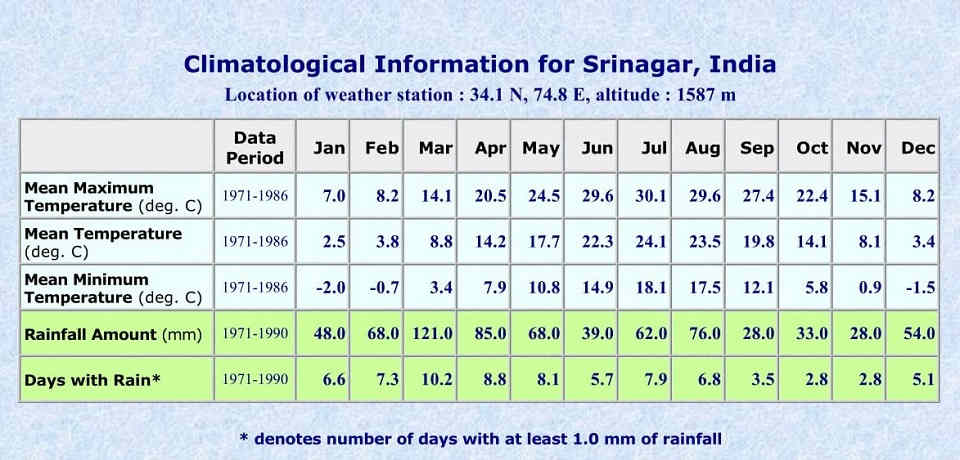Kashmir Weather and Climate
Kashmir Climate
The climate of Kashmir can be summed up from the quotation of famous British traveler Sir Walter Roper Lawrence in his book the Valley of Kashmir he wrote:
“In latitude, Kashmir corresponds with Peshawar, Baghdad, and Damascus in Asia, with Fez in Morocco and South Carolina in America, but it presents none of the characteristics of those countries. People have linked the climate of Kashmir to that of Switzerland until the end of May, and of Southern France in July and August. But it is impossible to speak of Kashmir as possessing anyone climate or group of characteristics. Every hundred feet of elevation brings some new phase of climate and of vegetation”.
Temperature
Kashmir lies in the Northern Hemisphere, has a moderate climate, which is largely defined by its geographic location, with the towering Karakoram Range in the north, Pir Panjal Range in the south and west, and Zanskar Range in the east. It can be generally described as cool in the spring and autumn, mild in the summer, and cold in the winter. As a large valley with significant differences in Geo-location among various districts, the weather is often cooler in the hilly areas compared to the flat lower part.
Summer is usually mild and with good little rain, but relative humidity is generally high and the nights are cool. The precipitation occurs throughout the year and no month is particularly dry. The hottest month is July (mean minimum temperature 6°C, mean maximum temperature 32°C) and the coldest are December–January (mean minimum temperature −15°C, mean maximum temperature 0°C).
Compared with other plain parts of India, Kashmir valley enjoys a more moderate climate, but weather conditions are unpredictable. The recorded high temperature is 33°C and the recorded low is −18°C.
Rainfall
Kashmir receives moderate to heavy snowfall during the months of December-February. Across from the Pir Panjal range, the South Asian monsoon is no longer a factor and most precipitation falls in the spring from southwest cloud-bands. Because of its closeness to the Arabian Sea, Srinagar receives as much as 635 millimeters (25 in) of rain from this source, with the wettest months being March to May with around 85 millimeters (3.3 inches) of rain per month.




